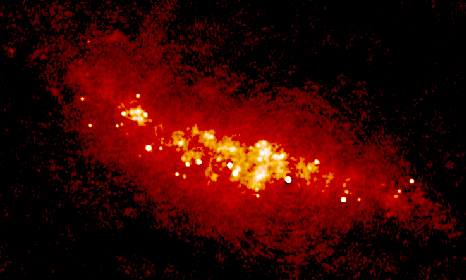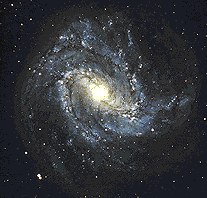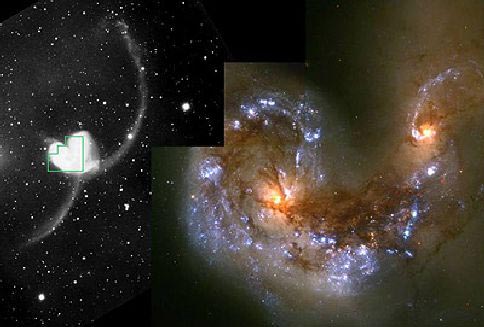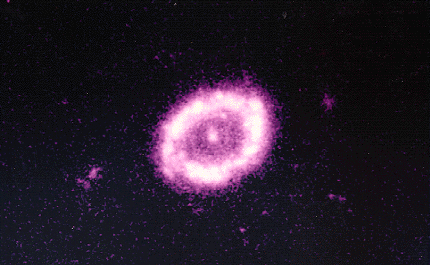What is a Starburst Galaxy?
A starburst galaxy is a spiral galaxy that is
undergoing a burst of star formation. At the observed rates of star formation, most
starburst galaxies would run out of their gas supply within a billion years (short
compared to their suspected ages of 5-10 billion years), and some in only 1/10th of that
time.

M 82
|
This is an infrared image of the
starburst galaxy M 82. The bright spots are the expanding shells of supernova
remnants, the remains of many massive stars which formed in a rapid burst of star
formation. |

M 83
|
This is an image of starburst galaxy M
83. The center of the galaxy is where most of the older stars appear. The new
stars are usually formed from the gas and dust found in the spiral disk. In visible
wavelengths, there is little to indicate that a luminous burst of star formation is taking
place. This is why infrared observations are needed. |
Sometimes starburst galaxies appear as gas and
dust-rich spiral galaxies. Starburst galaxies usually appear quite distorted and
irregular and it is clear that many are deformed as a result of collisions between two or
more galaxies or near-misses. Astronomers have discovered strong evidence that the
gravitational tides generated in such close encounters between spiral galaxies can distort
their appearance and can trigger a starburst in one or both of the interacting galaxies.
 NGC 4038 and NGC 4039 - NGC 4038 and NGC 4039 -
The Antennae Galaxies
|
A ground-based telescopic view (left)
reveals long arcing "antennae" of new luminous stars flung from the collision of
galaxies NGC 4038 and NGC 4039. Using the Hubble Space Telescope, astronomers have
recently discovered over a thousand bright young clusters of stars - the result of a burst
of star formation triggered by this collision. The primary starburst is not seen in
this visual-light picture, but it would be seen in infrared pictures. |
Since stars form in cold, dusty gas clouds, very little
visible light can be seen from them at birth. Fortunately, the dust is heated by the
stars and emits infrared radiation, which can escape the clouds, nearly unimpeded.
Starburst galaxies are thus, very bright when viewed at infrared wavelengths, compared to
what a regular visible-light picture would show.

M 94
|
This is an infrared image of Galaxy M 94. M 94 is
somewhat unusual spiral galaxy in that it shows a great ring of bright young stars.
Such a high abundance of these young stars cause a galaxy to be designated a starburst
galaxy. |
Most starburst galaxies emit about ¾ of their light at infrared
wavelengths. Some of them emit more than 99% of their light in the infrared!
Starburst galaxies are tough to pick out of the galaxy "crowd" in regular
visible-light pictures, but they become obvious to infrared telescopes. Our Milky
Way is actively forming stars, but does not qualify as a starburst galaxy. About 50%
of the light emitted by the Milky comes out in the infrared.
[Next]
Last Updated: 12/2/98


 NGC 4038 and NGC 4039 -
NGC 4038 and NGC 4039 - 